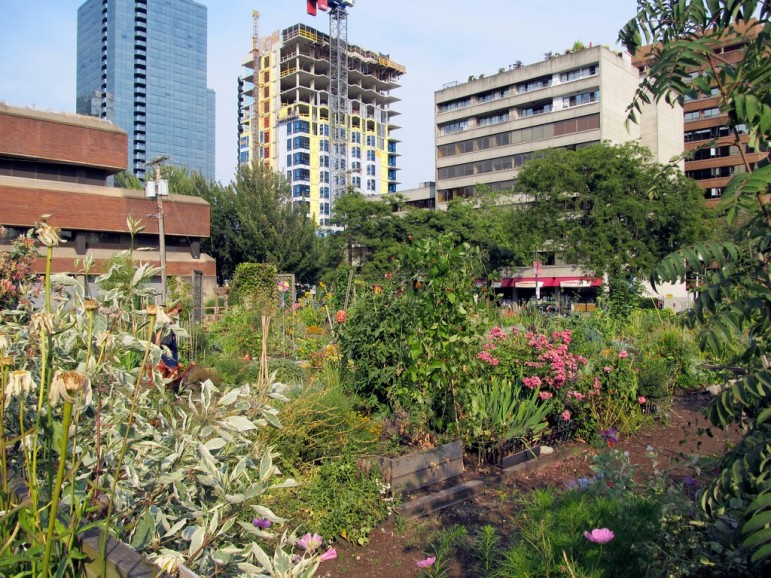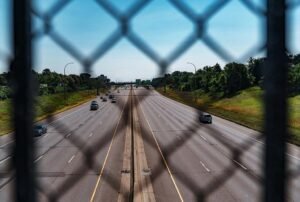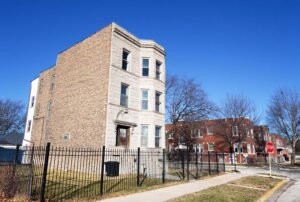
November 25, 2015; News & Observer (Associated Press)
Urban farms and community gardens have been popular for a number of years, particularly as the farm-to-table movement took off. In cities across the country, many vacant, often blighted lots were adopted and converted to bring “healthy food, commerce and eye-pleasing greenery to dreary neighborhoods” and to supply restaurants and farm markets with locally grown produce. But now, according to the Associated Press, “as more people look to live and work in central cities, growers say it’s harder to find and remain on land now sought by developers.” At risk, farm advocates say, is not only the ability to grow food nearby and cultivate nature in more parts of the city, but the community spirit that often grew up around these projects.
Community gardens have often provided neighborhoods, local schools, and programs that work with at-risk youth with the chance to bring diverse people together to work toward a shared goal. But with big money at stake, local officials are often unwilling to champion these projects in opposition to housing development. St. Paul City Council Member Amy Brendmoen is quoted as saying that she saw the decision there to support building projects instead as “sad but inevitable.”
At the same time, ABC News reported this past week on a contradictory trend taking place in some suburban subdivisions and various communities wherein housing developers are responding to the farm-to-table movement themselves by “adding farms to neighborhoods to give people what they want…old fashioned roots to grow.”
Some urban farm promoters are “pushing local officials to begin setting aside plots for urban agriculture because of the health and community benefits.” In the Seattle area, “officials have designated portions of parks and other public land. In Los Angeles, community groups are encouraging developers to have farming and green space designed into housing, including on rooftops.”
At The Cannery in Davis, California, which presents itself as “the first farm-to-table new home community,” ABC News reported that “nearly 540 homes will be walking distance of a 7.5-acre farm” with housing styles ranging from affordable apartments to million-dollar estate homes. Given that when it opened to potential buyers in August, 5,000 people came through the Cannery on the first day—and that buyers have ranged from millennials to retirees and empty-nesters—the developers seem to be onto something.
Ed McMahon, senior fellow at the nonprofit Urban Land Institute, a real estate research group in Washington, D.C., told ABC “agrihoods” are hot. “Almost every week I get a call from a different country about a new development,” McMahon said. “What people are finding is that it is an amenity that can really actually create some value in a community.”
Sign up for our free newsletters
Subscribe to NPQ's newsletters to have our top stories delivered directly to your inbox.
By signing up, you agree to our privacy policy and terms of use, and to receive messages from NPQ and our partners.
Across the U.S., these communities take different forms. “At Agritopia, outside of Phoenix, residents take pride in growing on their own plots, whereas, “people who buy in the Davis development won’t work the farm.” In Serenbe, a community within an hour of downtown Atlanta, “homes are scattered throughout a 25-acre organic farm, where professional farmers tend the land and sell fruits and vegetables to local residents.”
There’s even a movement afoot in some places to push the concept even further to include livestock. The Detroit Free Press just reported that, where “city laws technically don’t allow for the raising of livestock,” city councilman James Tate is looking to sponsor an ordinance that would change that to “allow homeowners and urban farmers to raise their own livestock safely while also making sure that neighbors aren’t upset.”
Not everyone is a fan, of course, but a recent study conducted by PricewaterhouseCoopers and the Urban Land Institute that looked at emerging trends in real estate for 2016 suggests, according to the Christian Science Monitor, that “more urban farms will sprout up across the U.S., especially in areas where vacant land sits unused and unwanted.” The report also said, “What is important—and trending—is the new vision that has urban land as the most precious and flexible of resources.”
Mikkel Kjaer and Ronnie Markussen, who run a Danish urban design lab and who were written up in September by UK firm Collectively, are among those hoping this is true. They are designing a type of urban farm in a box intended to “increase food security in cities, lower the ecological footprint of food production” and “easily adapt to changes in the urban landscape.” Eyeing the U.S. as their primary target market, their “Impact Farm” kit is designed to be built with “an assembly-kit of ready-made components” which when put together, is a two-story vertical hydroponic (or soil-free) farm…designed to be self-sufficient in water, heat and electricity.” Once installed, their farm’s production area “stretches to 538 square feet. Crops include greens, herbs and fruiting plants.”
Kjaer foresees it being used by “catering companies, housing cooperatives, schools, municipalities, restaurants, and local communities.”
NPQ would love to hear from advocates of community development about the importance of such projects to development in poor urban communities and whether you have had to protect them from other development plans.—Susan Raab













